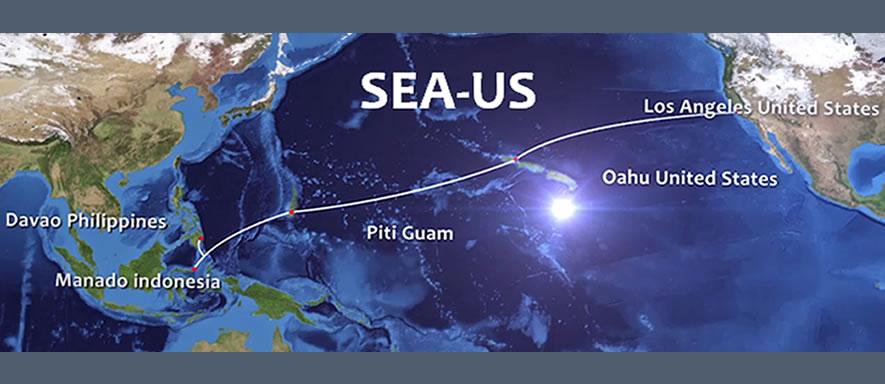Globe Telecom, one of the Philippines’ largest telecommunications providers, has launched the US$250 million Southeast Asia-United States (SEA-US) submarine cable system, providing direct links between Davao City and the United States. The 14,500-kilometer cable system uses 100Gbps transmission technology to deliver 20 terabits per second capacity (Tb/s).
The SEA-US cable system was built by a consortium of seven international telecommunications companies and links five areas and territories that include Manado (Indonesia), Davao (Philippines), Piti (Guam), Oahu (Hawaii, United States), and Los Angeles (California, United States).
“It is important to keep our country competitive. We are sworn and bound by our duty to keep on improving the internet. This signals our entry towards first world internet,” Globe President and CEO Ernest Cu said during its launching event on August 11 at the Bonifacio Global City in Taguig.
He said that the SEA-US submarine cable system would enable to support the growth of businesses in Mindanao and lessen the country’s dependence on international cable systems for its internet connection.
“First world connection is more than just fast internet but is also about building a better nation that transcends borders and opens infinite possibilities for everyone,” said Cu. “We are excited about this development because of the immense benefits that the SEA-US undersea cable system will bring to the Philippines.
Cu added: “For one, it will provide support for the expanding business requirement for data in the Mindanao region where the cable landing station is located and in the country as a whole. This will also ease our dependence on international cable systems and ensure the resiliency of the country’s internet connectivity.”
The SEA-US cable system is connected to the Globe cable landing station in Brgy. Talomo, Davao City, which also houses the power feed equipment necessary to run the system. Outside of Luzon, the undersea cable is the first direct connection of Globe to the United States via Guam, Hawaii, and California, offering faster transmission of data to the US.
It also bypasses the Taiwan earthquake zone to ensure uninterrupted connectivity and greater resiliency to prevent an incident similar to a major quake in 2006 where international cables were broken causing the Philippines to be isolated for a few days in terms of internet connection.
Aside from forming part of the SEA-US consortium, Globe is also a member of an international consortium of telecommunications and technology companies, operating the Southeast Asia-Japan Cable (SJC) system.
SJC is an 8,900-kilometer cable system linking seven territories that include Brunei, mainland China, Hong Kong, Japan, Singapore, and the Philippines, including the option to link with Thailand. The cable infrastructure is currently being upgraded to bring an increase of 6.5 Tb/s capacity with state of the art 100G technology.
